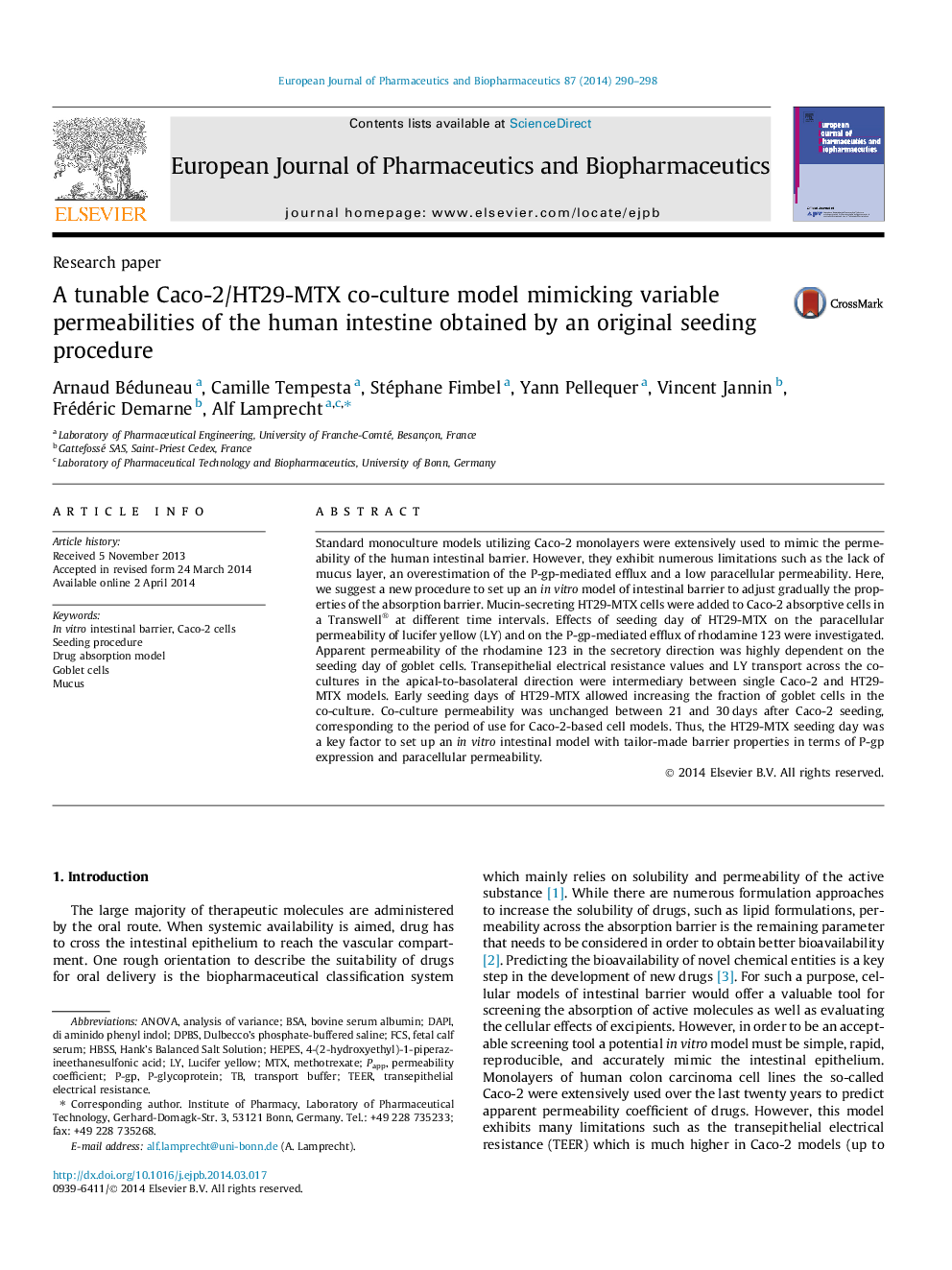| Article ID | Journal | Published Year | Pages | File Type |
|---|---|---|---|---|
| 2083561 | European Journal of Pharmaceutics and Biopharmaceutics | 2014 | 9 Pages |
•A Caco-2/HT29-MTX co-culture model of the human intestinal barrier was established.•Sequential seeding of cells allowed modulating the co-culture permeability.•P-glycoprotein-mediated efflux was dependent on the seeding day of goblet cells.•Co-culture was covered by a continuous mucus layer.
Standard monoculture models utilizing Caco-2 monolayers were extensively used to mimic the permeability of the human intestinal barrier. However, they exhibit numerous limitations such as the lack of mucus layer, an overestimation of the P-gp-mediated efflux and a low paracellular permeability. Here, we suggest a new procedure to set up an in vitro model of intestinal barrier to adjust gradually the properties of the absorption barrier. Mucin-secreting HT29-MTX cells were added to Caco-2 absorptive cells in a Transwell® at different time intervals. Effects of seeding day of HT29-MTX on the paracellular permeability of lucifer yellow (LY) and on the P-gp-mediated efflux of rhodamine 123 were investigated. Apparent permeability of the rhodamine 123 in the secretory direction was highly dependent on the seeding day of goblet cells. Transepithelial electrical resistance values and LY transport across the co-cultures in the apical-to-basolateral direction were intermediary between single Caco-2 and HT29-MTX models. Early seeding days of HT29-MTX allowed increasing the fraction of goblet cells in the co-culture. Co-culture permeability was unchanged between 21 and 30 days after Caco-2 seeding, corresponding to the period of use for Caco-2-based cell models. Thus, the HT29-MTX seeding day was a key factor to set up an in vitro intestinal model with tailor-made barrier properties in terms of P-gp expression and paracellular permeability.
Graphical abstractFigure optionsDownload full-size imageDownload high-quality image (114 K)Download as PowerPoint slide
